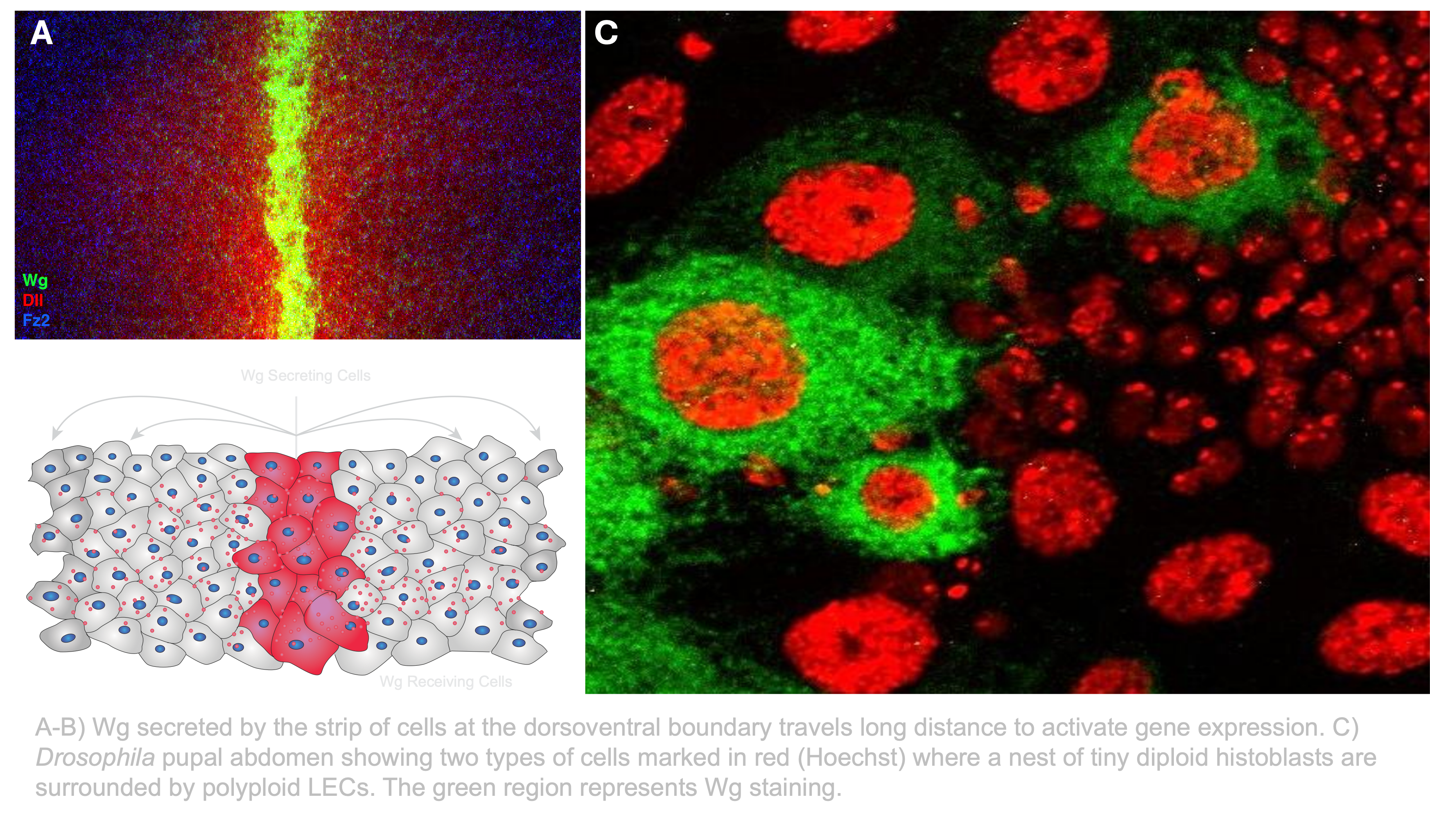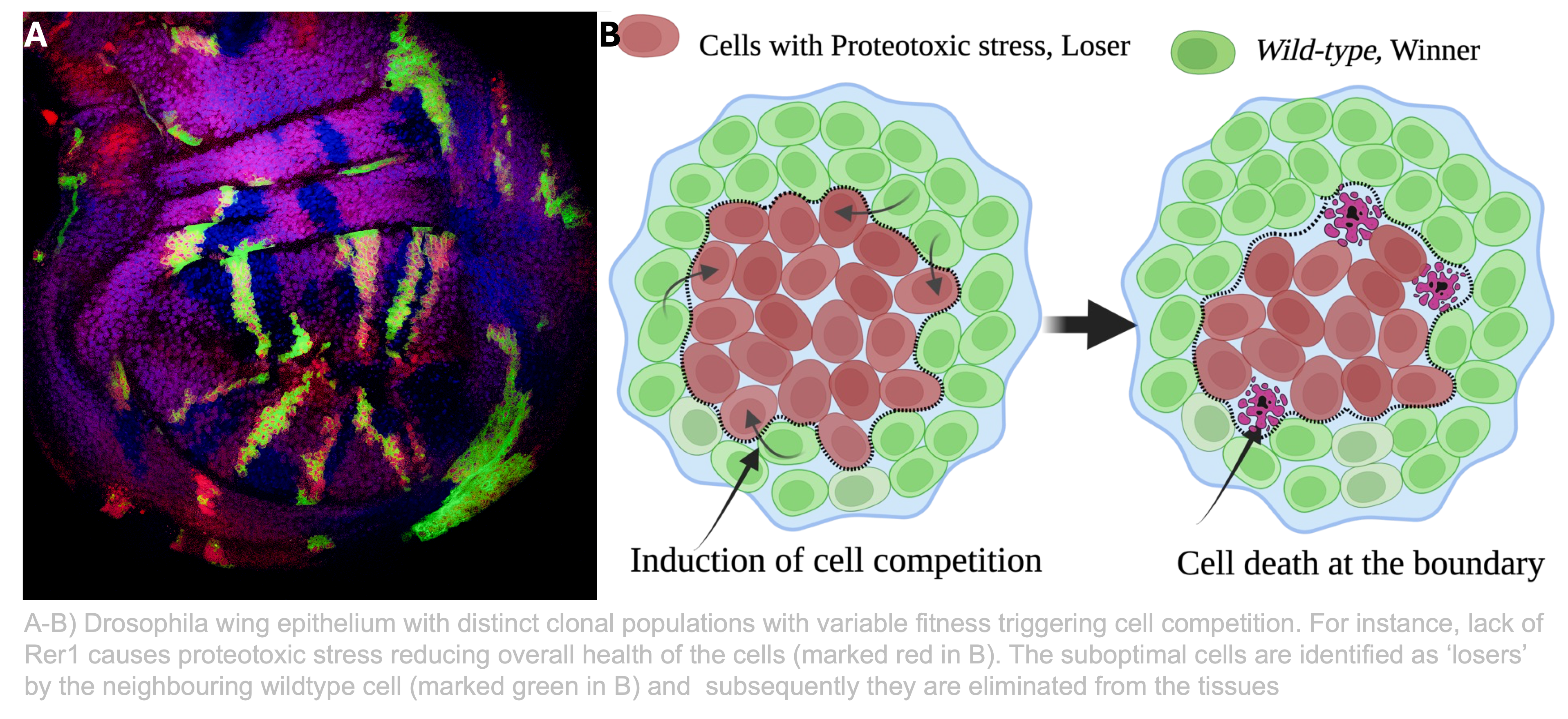Research Theme: Cell-cell communication during tissue growth and patterning
Focus area 1: Wnt/Wg secretion and signaling in developing tissues

Background:
Wnt proteins represent a crucial category of secreted ligands that activate diverse signaling pathways essential for several developmental processes, including cell fate determination, body axis formation, cell migration, proliferation, tissue maintenance, and regeneration. Aberrant activation of Wnt pathways has been implicated in various cancers. Despite their hydrophobic nature due to lipid modification, Wnts exhibit the remarkable ability to traverse long distances to facilitate signaling. Deciphering the mechanisms governing the packaging and release of hydrophobic Wnt proteins for long-range propagation has been a major focus within the field.
Our research endeavors are largely focused on unraveling the intricate machinery regulating Wnt/Wg secretion, gradient establishment and signaling activation. To dissect these complex Wnt/Wg-related mechanisms, we employ the developing Drosophila wing epithelium and the abdominal histoblast as model tissues.
Our research:
Building upon our previous investigations, we have delineated how cells finely modulate signaling along the concentration gradient of Wnt ligands through feedback regulation. Furthermore, our recent endeavors have shed light on the pivotal role played by endocytosis and endosomal acidification in effecting the separation of Wnt protein from its cargo-receptor Wntless, ultimately leading to Wnt secretion.
Related Publications:
Focus area 2: Cell-competition and Proteostasis

Background:
In many developing tissues, cells engage in competitive interactions, assessing each other's fitness and ultimately eliminating less fit, or 'loser,' cells. This phenomenon, commonly termed cell competition, is crucial for maintaining tissue health and functionality. Various cellular dysfunctions can trigger the loser fate, including loss of tissue polarity, impaired endocytosis, defective ribosome assembly, and proteotoxic stress. Conversely, certain perturbations, such as Myc oncogene overexpression, can give rise to super-competitor cells capable of outcompeting even healthy wild-type cells, even though they also grow under proteotoxic stress. A few fundamental questions are: how do cells perceive the fitness levels of their neighbors? And, how stressed Myc-overexpressing cells escape the loser fate.
Our research:
Our lab employs developing Drosophila (fruit fly) epithelial tissues to understand the mechanisms of cell competition. Recently, we identified an ER-resident protein, Retention in the ER1 (Rer1), as a crucial regulator of protein homeostasis. Loss of Rer1 induces proteotoxic stress, leading to the generation of loser cells. Additionally, we observed that Myc-overexpressing cells rely heavily on Rer1 for survival. Our current focus involves delving deeper into the mechanisms of Rer1-mediated protein homeostasis and its significance in cell survival.
Related Publications:
 Cell and Developmental Signaling Lab
@ IISER Bhopal
Cell and Developmental Signaling Lab
@ IISER Bhopal